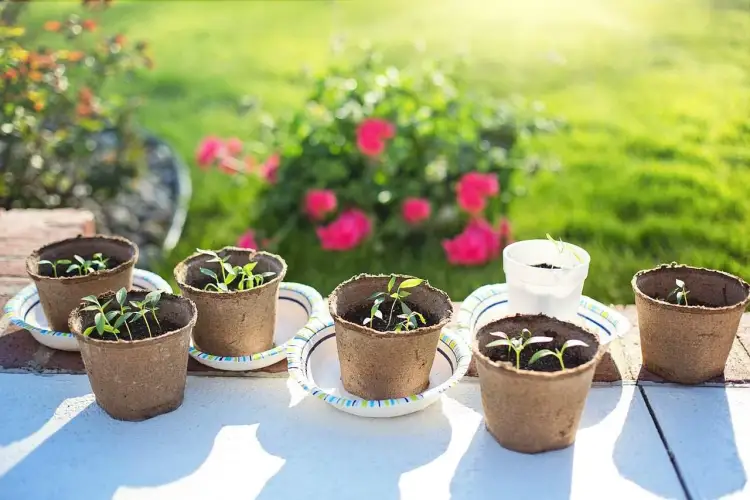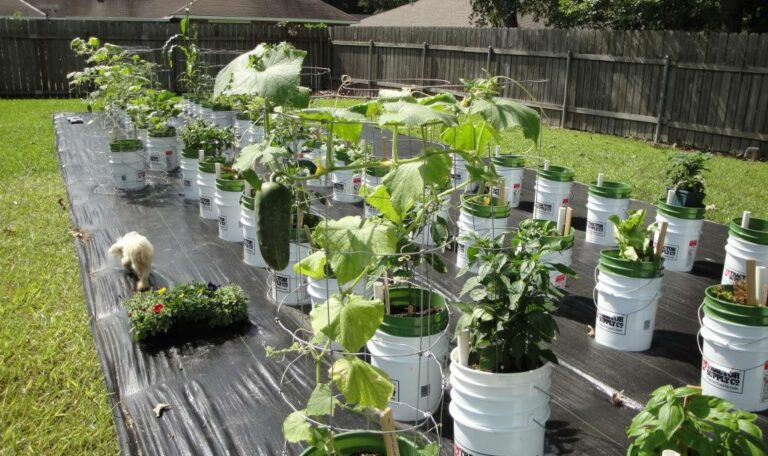Creating a successful vegetable garden on a patio requires strategic planning and specialized techniques. This expert guide explores essential tips and insights backed by governmental agricultural bodies, horticultural experts, and academic research to help you maximize your patio garden’s productivity.
Choosing the Right Containers
Select containers that are large enough to accommodate the root systems of your chosen vegetables. Opt for durable materials like terracotta or food-grade plastic, ensuring they have drainage holes to prevent waterlogging.
Selecting the Ideal Location
Place your patio garden in a spot that receives at least 6-8 hours of sunlight daily. Consider using movable containers to optimize sunlight exposure throughout the day and protect plants from harsh weather conditions.
Soil Quality and Composition
Use a high-quality potting mix enriched with organic matter to promote healthy root growth and moisture retention. Regularly monitor soil moisture levels and adjust watering accordingly to prevent drought stress or waterlogged roots.
Choosing Suitable Vegetables
Select compact and dwarf varieties of vegetables suited to container gardening. Focus on crops like cherry tomatoes, salad greens, peppers, and herbs that thrive in confined spaces and offer high yields.
Watering Techniques
Water plants deeply and consistently, ensuring the soil remains evenly moist without becoming waterlogged. Use drip irrigation or a watering can with a fine nozzle to deliver water directly to the root zone and minimize water waste.
Fertilization Strategies
Apply a balanced liquid fertilizer or organic compost tea regularly to replenish nutrients in container gardens. Follow manufacturer’s instructions or consult local agricultural extensions for specific fertilization schedules based on plant needs.
Pest and Disease Management
Monitor plants regularly for signs of pests and diseases, such as aphids or powdery mildew. Use organic pest control methods like neem oil spray or companion planting with herbs to deter pests naturally.
Vertical Gardening Techniques
Utilize vertical space by training vining plants like cucumbers or peas to grow up trellises or stakes. This maximizes growing area and improves air circulation around plants, reducing the risk of fungal diseases.
Seasonal Maintenance
Regularly prune plants to promote bushy growth and remove dead or diseased foliage promptly. Rotate crops annually to prevent nutrient depletion and minimize pest buildup in container gardens.
Harvesting and Storage Tips
Harvest vegetables at peak ripeness to enjoy the best flavor and nutritional value. Properly store harvested produce in cool, dry conditions to extend shelf life and minimize waste.
What are the best vegetables to grow in containers on a patio?
Focus on compact varieties like cherry tomatoes, peppers, herbs, and salad greens that thrive in limited space and provide high yields.
How much sunlight does a patio vegetable garden need?
Aim for at least 6-8 hours of direct sunlight daily for optimal growth and productivity of vegetables in containers.
What type of containers are best for patio vegetable gardening?
Choose containers made of durable materials like terracotta or food-grade plastic with drainage holes to prevent waterlogging.
How often should I water my vegetables in containers on a patio?
Water deeply and regularly, ensuring the soil remains evenly moist but not waterlogged. Adjust watering frequency based on weather conditions and plant needs.
What soil should I use for a patio vegetable garden?
Use a high-quality potting mix enriched with organic matter to promote healthy root growth and moisture retention in container gardens.
Can I use fertilizer in my patio vegetable garden, and how often?
Apply a balanced liquid fertilizer or organic compost tea regularly to replenish nutrients. Follow manufacturer’s guidelines or local agricultural recommendations.
How do I prevent pests and diseases in a patio vegetable garden?
Monitor plants for signs of pests and diseases regularly. Use organic pest control methods such as neem oil or companion planting with pest-repellent herbs.
Should I use trellises or stakes for vertical gardening on a patio?
Yes, utilize trellises or stakes to support vining plants like cucumbers or peas, maximizing space and improving airflow around plants.
What are the benefits of vertical gardening in a patio vegetable garden?
Vertical gardening conserves space, increases growing area, and reduces the risk of fungal diseases by improving air circulation around plants.
How do I harvest and store vegetables grown on a patio?
Harvest vegetables at peak ripeness for best flavor and nutritional value. Store harvested produce in cool, dry conditions to extend shelf life.
- Virginia’s Growing THC Seltzer Craze - June 5, 2025
- Find THC Sodas in Ohio - June 5, 2025
- THC Infused Seltzers to Try in New Jersey - May 19, 2025





